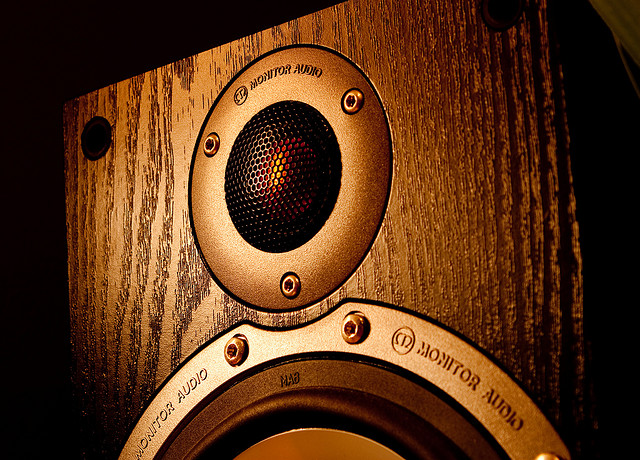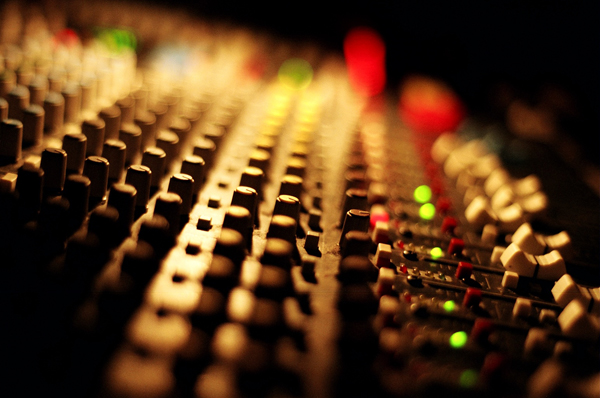This is the first of two posts. To read the second, on metadata for BitTorrent Bundles, click here.
If you’ve followed the news lately, you’ll have noticed that BitTorrent is on its way up in the music world. When we’re not busy launching an album for Radiohead’s Thom Yorke or boosting a Madonna movie, we’re helping smaller artists knock down the castle walls that have excluded them from success in the music business.
BitTorrent Bundles are the engine of this revolution. They give artists the power to share and sell whatever content they please, with no concern over file size or maintaining a complicated website.
You might be a recording artist with a home studio, an aspiring filmmaker, or an Audio Professional with a big SSL mixing desk at your beck-and-call…there’s something for all of you in the opportunities that Bundle provides. I’m going to share a process that will create a truly professional result for your effort.
That sounds great, right? Let’s get down the the point of this article: the brass tacks of how to actually make this happen.
Before becoming a software engineer at BitTorrent, I received a degree in Audio Engineering at Expression College for Digital Arts. Subsequently, I worked for three years at Avid Technology contributing to the Pro Tools audio software package. I’ve mixed and mastered a variety of independent albums over the years, and love sharing the tricks of the trade.
If you’d like to dive deeper into the mastering process, I highly recommend the book Mastering Audio: The Art and the Science, by Bob Katz.
Preparing for Mastering

If you’ve been working on new music that you’d like to release, it’s important to make sure that it sounds the best it possibly can. Rather than releasing directly from your music software, making things sound as loud as possible, consider mastering.
Often thought of as a dark art, mastering is comparable to a final coat of polish for your completed recordings. Traditionally, the mixing engineer would send off a mixed track or album to a mastering engineer, who would perform a last pass of equalization, compression, and limiting before preparing everything to go onto a CD (or cutting a record master with a lathe).
Usually in possession of an immaculately tuned studio, extremely expensive speakers, and “golden ears”, a mastering engineer can be the difference between sounding like a wanna-be and being ready for radio-play. Understandably, they often charge a lot of money for this service.
Thankfully, in this era of home studios, it is possible to replicate some of that magic yourself. You’ll just need to spend a little more time at it.
Prepare Your Mix
Revisit your song’s mix. Remove any compressors/limiters/eq from the master output. Readjust the individual tracks until things sound good. It’s fine to add compression to individual tracks if you have volume levels that ‘get away from you’.
Once that’s done, is the master output bouncing into the red at any point? That will present itself as irreparable distortion. Adjust the levels of the individual tracks in the mix until the output averages comfortably around -15 to -12dBFS, at most. Peaks can go higher, that’s fine. You’ll probably need to turn up your speakers to hear the mix clearly…also expected. Make any final tweaks, and you’re ready to export a WAV file for mastering.
Digital audio is stored as a series of samples, each storing a value. The value describes a momentary volume level (positive or negative), in decibels. When played back in order, they create the waveform that is played through your speakers.
Bitrate (16, 24, 32 bit) controls the amount of detail put into each of those volume values. Sometimes it is also known as ‘bit-depth’, and determines the dynamic range of the recording (difference between loudest and quietest).
Sample rate (44.1khz, 96khz, etc) is the number of times per second that the volume level is recorded (44.1kHz = 44,100 times per second). By increasing the sample rate, you increase the maximum audio frequency that can be represented. The maximum audio frequency is ½ the sample rate (48kHz sample rate = max freq of 24,000 Hz, well beyond the upper limits of human hearing).
Exporting for Mastering
Select the content
Select the time range of the session that you want to export. Include some extra silence at the beginning (if possible) and the end, to make sure that you catch any long ringing instruments that fade slowly. We’ll trim it off later.
Configure the bounce
Open the dialog to bounce your recording, and you’ll be presented with a quandary…what bitrate and sample rate should you use? The most common standard is 24-bit, 96kHz.
There is one caveat to be aware of, however: changing the sample rate of a recording introduces artifacts that subtly reduce quality. So does changing bit rate, but to a lesser degree. Generally, it is acceptable to leave the sample rate at the original rate for your session (so if you’re at 44.1 or 48kHz, that’s fine). Usually though, if your bitrate is 16-bit, you’ll want to go up to 24-bit. 24-bit gives a dramatic increase in dynamic range that means you’re far less likely to “clip” or distort the recording with a sudden level peak.
Select a WAV file as your output type. Don’t choose a compressed format like MP3 or AAC here; they will cause serious quality loss in your recording, and make mastering much more difficult. Also, store a copy this file in a safe place, so that you don’t accidentally overwrite or modify it.
Once you’ve bounced all of the songs you intend to include, it’s time to begin polishing them as a group. The goal here is twofold: make the songs sound great individually, and cohesive when played in order.
Import to a new session
Create a new session in your DAW, and import all of the songs you intend to include in the Bundle. Add a track for each song, and space the songs out so that they play in order, one after another. Also create a master output track, to allow you to add plugins and processing that affects everything.
Trim the songs
Go through each song and trim any silence at the beginning and end. Create any fade-outs that you might desire. This is known as “trimming tops and tails”.
Add an EQ and compressor plugin to each of the individual song tracks. Add an EQ and limiter to the master output. Now, hopping through the different songs, identify any that are louder or quieter than the others, as well as any with a significantly different frequency profile (such as “too bassy”, “tinny”, etc). Should you encounter any major discrepancies, you’ll want to return to the original session and fix it there. Minor, song specific adjustments can be made here, however. Keep EQ adjustments to no more than +- 3dB, with relatively wide slopes. Using the makeup gain of the per-track compressor plugins, adjust the overall level of each song to be in the same ballpark. Use small amounts of compression where necessary to tame serious spikes in level.
Finally, adjust the output EQ and limiter until you’re happy with the sound. Set the limiter to cap your output level at -0.3dB. Tweak the individual songs as necessary during this process. Try to resist the urge to over-limit the songs…going louder may sound better at first, but listeners will find it fatiguing after a short while.
Export Final versions, Test Everywhere
Once you’re happy with the sound, select each of the individual songs, one at a time, and bounce out test master versions of them in 16-bit/44.1kHz (standard CD quality) WAV. Proceed to listen to them in as many locations as possible. Hearing things in your car or on earbuds can highlight problems that you never noticed. Don’t be afraid to go back to the master and tweak settings with this new feedback in mind.
Name and save your final master WAV files in a safe place. We’ll be compressing them for distribution next.
Stay tuned for Part 2, where Aaron describes how to optimize your Bundle’s metadata.
Photo: Flickr/Matt Barber, Dan Machold

